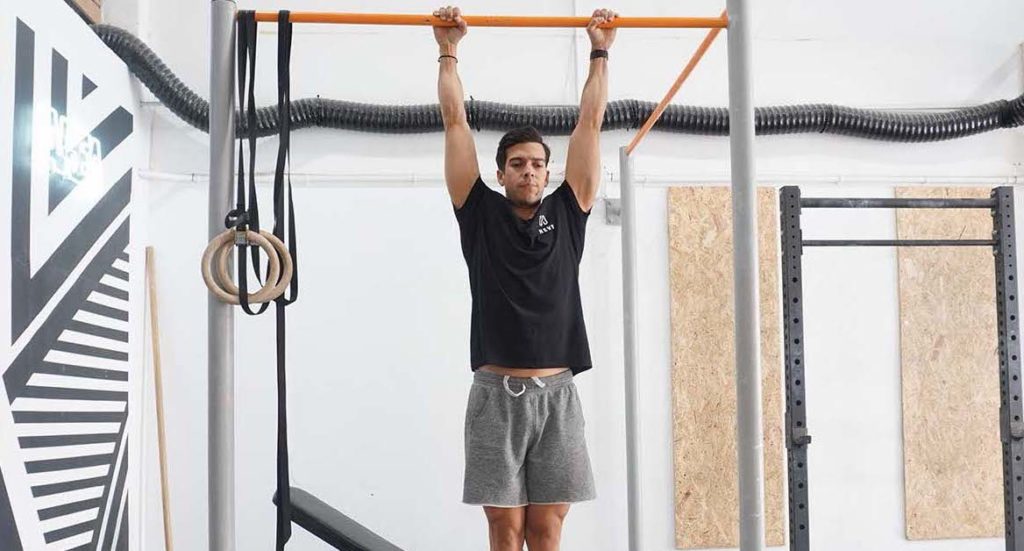The Benefits of the Farmer’s Walk
Farmer’s walk, also known as a farmer’s carry or loaded carry, is one of the simplest and most beneficial full-body activities that develops your grip strength, builds muscle, improves your stability, and contributes to balance. The beauty of the movement is that it works amazingly well for trainees of all levels, it takes little time to learn, and the risk of poor technique is low.
Performing the farmer’s walk starts by grabbing a pair of weights (dumbbells, typically), bringing your shoulders back, and engaging your entire body. Once you’ve set yourself up, all you have to do is walk in a straight line. While simple, the exercise gets challenging as you increase the load.
Most gym exercises have some carryover to daily life. For instance, the bench press strengthens your ‘pushing’ muscles, translating to upper body strength that makes certain activities easier to handle. The same goes for many other movements, like the squat, overhead press, and row.
But only a handful of activities make you as functional as the farmer’s carry, which trains almost all major muscles in your body. As a result, activities like climbing stairs, carrying groceries, and lifting objects off the floor become easier.
Plus, the loaded carry develops your grip, leading to better performance on other movements like the deadlift and pull-up.
We recommend starting with some light weights near the end of your workouts. Walk for up to half a minute, take a break, and repeat two to three times. Gradually increase the load as you get comfortable with the exercise until you hold weights that make it challenging to walk longer than 30 seconds.
You can then move up the farmer’s walk to the middle of your workouts to avoid performing the exercise when you’re too tired. Keep increasing the load and pay careful attention to your technique and posture as you walk.
Level of Exercise: Beginner
How to do the Farmer’s Walk
- Select the appropriate pair of dumbbells and place them on both sides of your body.
- Lean forward and bend your knees to grab the dumbbells.
- Bring your chest out and back in a neutral position.
- Push through your heels and extend your hips to deadlift the weights from the floor.
- Stand tall, retract your shoulder blades, keep your abs engaged, hold the dumbbells by your sides, and begin walking forward.
- Move forward at a steady pace, keeping your body rigid and breathing steadily as you do.
- Grip the dumbbell handles as hard as possible and walk as far as you can.
- Once finished, lower the dumbbells by first pushing your buttocks back and then bending your knees, similar to how you would for a deadlift.
- Set the weights on the floor and take a break.
What muscles does the farmer’s walk activate?
Farmer’s carry is a full-body compound exercise, and there isn’t a single muscle group that benefits the most. The activity effectively activates a range of muscle groups well enough to cause balanced development, build strength, and make you more athletic.
One of the major muscle groups that work during a farmer’s walk is the back complex. All of the muscles in the area flex isometrically to keep your spine in a strong and healthy position, retract your shoulder blades, and contribute to torso rigidity. Among the active muscles, we have the erector spinae, trapezius, and latissimus dorsi.
The midsection musculature also plays a considerable role during a farmer’s carry. Our abs, transverse abdominis, obliques, and other small muscles in the area flex isometrically, contributing to torso stability.
Our arm and shoulder musculature is also involved in a farmer’s walk. The deltoids, biceps, triceps, brachialis, and forearms contract for us to support the dumbbells as we walk back and forth. A considerable benefit of the farmer’s carry is that it strengthens our grip, making us better able to perform other exercises like deadlifts and pull-ups.
The entire lower body also works during the exercise. Our glutes, hamstrings, quadriceps, and calves activate and support forward motion as we hold weights in our hands (1).
Plus, the quadriceps, glutes, and hamstrings play a crucial role in deadlifting the weights off the floor before initiating the walk (2).
Proper Form when Preforming the Farmer’s Walk
The most crucial element of proper technique on a farmer’s carry is to keep your body rigid and upright from start to finish. You must support the weights on both sides of your body and maintain everything from your head to your heels aligned. Leaning forward or slouching puts you in a weak and compromised position, leading to poor performance and a higher risk of developing nagging aches.
Another tip for the farmer’s walk is to squeeze the dumbbell handles as hard as possible. Doing so might seem obvious, but many trainees make the mistake of simply holding the weights instead of squeezing them. As a result, the handles slip down to the fingertips, forcing trainees to stop the set early or re-adjust.
Our next tip for the exercise is to maintain a steady breath as you walk back and forth. Breathing is crucial for supplying your muscles with the oxygen they need and prevents you from getting winded. As a result, you can walk farther and train your entire body more effectively.
We also recommend starting with lighter weights to get familiar with the exercise. The farmer’s carry is traditionally known as a heavy compound exercise, but it would be better to get used to the movement and increase the load gradually. Starting with weights, you can barely handle would make it difficult to align your body correctly, ingraining poor motor patterns that take a long time to fix.
Our final tip for an effective farmer’s walk is to direct your gaze forward and avoid looking down because that can place unnecessary strain on your shoulders and neck. Treat the farmer’s carry like a regular walk in the pair, and don’t overthink your technique, stride length, or speed.
Variations and Modifications of the Farmer’s Walk Exercise
1. Trap Bar Carry
The trap bar carry is a variation you perform by stepping inside a trap bar, grabbing the handles to your sides, deadlifting the weight up, and walking forward. Performing the movement with a trap bar is an excellent way to overload your body with more weight and possibly achieve better activation in your upper back (trapezius).
2. Kettlebell Carry
The kettlebell carry is simply a variation where you use kettlebells for loading instead of dumbbells. Doing so isn’t inherently better or worse, but different. A benefit is that kettlebells can lead to more grip strength because the traditional handle is thicker than that of a dumbbell, making it more challenging to support the weights in your hands.
3. Unilateral Farmer’s Walk
The unilateral farmer’s carry is a variation where you hold a weight in one hand as you walk back and forth. Doing so leads to more instability and forces your midsection muscle to work extra hard to keep you upright. Your internal and external obliques engage to prevent you from bending to one side. Hold a weight in one hand, walk as long as possible, grab the weight with your other hand, and cover the same distance.
Mistakes to Avoid
Looking Down
One of the most common errors with the farmer’s walk is looking down. Doing so places unnecessary strain on your upper back and neck, leading to nagging aches. Plus, looking down contributes to upper back rounding, leading to instability and preventing you from performing at your best. A much better approach is to bring your shoulders back, engage your abs, direct your gaze forward, and maintain that setup for the duration of your walk.
Leaning Forward
The second significant error with the farmer’s walk is leaning forward at the waist, which often occurs due to fatigue. The problem is that leaning forward puts stress on your lower back, leading to pain in the area. Avoid the error by being mindful of your posture and keeping your head, shoulders, hips, and lower body aligned and in a straight vertical line.
Going too Heavy
The third error with the farmer’s walk is picking weights you cannot handle properly. While the farmer’s walk is a whole-body compound exercise, you should never underestimate the importance of selecting the correct load. Going too heavy can impair walking mechanics, stop you from keeping an upright posture, and increase the risk of dropping the weight as your hands get tired. A better approach is to start with lighter weights to get used to the exercise and gradually increase the load until you get to a point where walking for 30 to 40 seconds challenges you.
Having The Weight too Close
Keeping the weight too close to your body is another error that can impair your performance because you might hit your thighs and get bruised. Avoid the mistake by having your arms slightly out to clear enough room between your thighs and the dumbbells. Alternatively, start by holding a pair of weight plates, which are thinner and easier to keep away from your lower body.
Similar Exercises to the Farmer’s Walk
Dead Hang

Like the farmer’s walk, dead hangs are an endurance-based exercise that develops your grip, upper back, core, and glutes. The objective is to grab a pull-up bar, lift your feet off the floor, and support yourself in the air. You don’t have to retract your shoulders, but you should maintain a neutral position and flex your midsection to keep you from swinging back and forth.
Shrugs (Dumbbell)

Dumbbell shrugs are another fantastic exercise that improves grip strength, develops your upper back, and promotes scapular health. Like the farmer’s walk, you must grab a pair of moderately-heavy dumbbells and bring them to your sides. But, instead of walking, the objective is to raise (shrug) and lower your shoulders repeatedly. Doing so forces your trapezius muscle to activate and develop (3).
Back Extension (Hyperextension)
Back hyperextensions are not the same as a farmer’s walk, but the two activities are fantastic for developing your entire posterior chain: the hamstrings, glutes, and back (4). The objective is to anchor yourself inside a hyperextension machine with your face down. Once in position, lower your torso by bending at the waist and extend your body by engaging your posterior muscles. The movement’s range of motion is excellent, and you can increase the resistance by holding a weight plate as you do reps.
Deadlift (Trap Bar)
Trap bar deadlifts are an excellent variation for people who struggle to get in the correct position for barbell deadlifts. Using a trap bar allows you to remain more upright, leading to slightly better quadriceps activation. The movement is similar to a farmer’s walk because it strengthens a range of major muscle groups in the body, including the legs, glutes, back, midsection, and arms.

